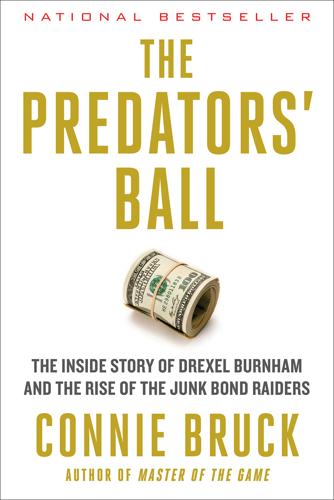
The Predators' Ball: The Inside Story of Drexel Burnham and the Rise of the JunkBond Raiders
by
Connie Bruck
Published 1 Jun 1989
He had arrived at the conference earlier in the day, and then came a news broadcast that a terrorist bomb had exploded aboard a TWA flight from Rome to Athens. Icahn turned and headed back to New York. He may well have been remembering his visit to the Predators’ Ball one year before. Then, he had had no major company to run. Then, he had had his money in no situation that he could not control. Then, he had been fresh from his Phillips grand slam, where he had played his game and made $52.5 million in ten weeks. And then, he had stopped in at Peiser’s presentation. BY OCTOBER 1986, six months after Icahn had departed hastily from the Predators’ Ball, he had subdued—at least for the short term—his demons at TWA. The staggering losses of the first half of the year—$275.6 million—had been stanched.
…
Dozens of them ferried guests from the lush green-and-pink medley of the Beverly Hills Hotel—then owned by arbitrageur Ivan Boesky, his wife and his in-laws, and completely booked by Drexel for these four nights—through the city’s wide, stately, palm-tree-lined streets. Their destination was the Beverly Hilton, where the annual Drexel High Yield Bond Conference—by now known as the Predators’ Ball—was being held, just a few blocks from Drexel’s West Coast office. Breakfast was served at 6 A.M., a concession to popular tastes by Milken, who was at his desk each day by 4:30 A.M. Then came the perpetual round of presentations, sometimes three simultaneously in different rooms, given by heads of companies.
…
“Instead of a dialogue, it’s like watching TV,” complained James Caywood of Caywood-Christian Capital Management, who manages about $2.2 billion, mainly for savings-and-loan associations (S&Ls), and is an old-timer in the junk market. “The conference has become—excuse my language—a gangbang.” It had also, this year, become the Predators’ Ball. There was a new gospel—or, more, a kind of added liturgy—being preached these days by Milken, who had become more messianic, more fevered, more wired, than ever. His message, received with wild excitement by this congregation, was that they should save corporate America from itself. Milken had long professed contempt for the corporate establishment, portraying many of its members as fat, poorly managed behemoths who squandered their excess capital and whose investment-grade bonds, as he loved to say, could move in only one direction—down.

Dear Chairman: Boardroom Battles and the Rise of Shareholder Activism
by
Jeff Gramm
Published 23 Feb 2016
Stevens, King Icahn, 43. 31. Ibid., 43. 32. Ibid., 111. 33. Ken Auletta, “The Raid: How Carl Icahn Came Up Short.” New Yorker, March 2006. 34. Bruck, The Predators’ Ball, 247. 35. James Stewart, Den of Thieves (New York: Touchstone, 1992), 136. 36. Bruck, The Predators’ Ball, 17. 37. Ibid., 163. 38. John Taylor, Storming the Magic Kingdom: Wall Street, the Raiders, and the Battle for Disney (New York: Ballantine, 1988), 108. 39. Bruck, The Predators’ Ball, 165. 40. Ibid., 166. 41. Pickens, The Luckiest Guy in the World, 234. 42. Front-loaded, “two-tier” tender offers divide the tender into two stages.
…
Fellow raider Ron Perelman got $750 million the following year. The next year, Sanford Sigoloff, the so-called Skillful Scalpel, got $1.2 billion.8 The blind pools were raised without specific acquisitions in mind—they merely served to build war chests for future raids. In her excellent book about the rise of Michael Milken and Drexel Burnham, The Predators’ Ball, Connie Bruck called Icahn’s battle with Phillips Petroleum “Drexel’s gala coming-out.” As for Carl Icahn, “it was a giant—almost magical—step up.”9 But within a year of the book’s publication, Milken was indicted by a grand jury and the Drexel money machine ground to a halt. Icahn’s assault on Phillips may have trumpeted the arrival of Drexel and the hostile raiders, but it also turned out to be the beginning of the end.
…
When Milken was incarcerated and permanently barred from the industry, the raider movement of the 1980s faded away. But after Milken collapsed in flames, many of the men presumed to be his puppets—and ridiculed in some circles for being small-timers but for the good graces of Drexel Burnham—compounded their success. The Predators’ Ball was particularly dismissive of Nelson Peltz, but over the next twenty years, he became a superstar, one of the elder statesmen of activist investors. And of course there is Carl Icahn, brash and bold, gunning for bigger prey with every new investment. One of his latest targets is Apple, the largest company in the history of the world.
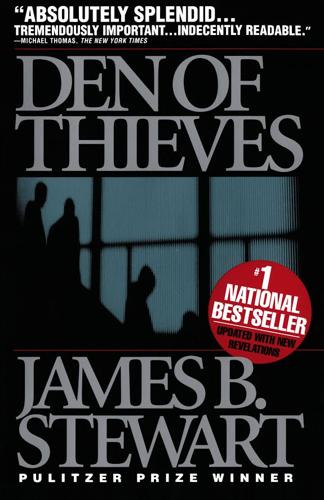
Den of Thieves
by
James B. Stewart
Published 14 Oct 1991
Under an earlier agreement with Bruck, Joseph was allowed to read it and comment on the facts, but not make copies. He knew immediately that there would be trouble. Titled The Predators' Ball: The Junk Bond Raiders and the Man Who Staked Them, the book was a thorough, sober study of Drexel, Milken, and several of their clients, a groundbreaking examination of Milken's junk-bond empire. The book reported that Drexel had hired prostitutes for the Predators' Ball, that in his early days at Drexel Milken had worn a miner's helmet on the commuter bus so he could read prospectuses in the dark, and that the junk-bond king himself had tried to buy Bruck out of writing the book.
…
page 112 Engel denies Joseph's allegations, and has never been charged with any wrongdoing in connection with the incident. page 112 Engel's dismissal was reported in Bruck, The Predators' Ball, pp. 337-339. page 116 The 1985 Predators' Ball was the subject of Anthony Bianco, "The Growing Respectability of the Junk Heap," Business Week, Apr. 22, 1985. page 118 Bruck reported the presence of prostitutes at the 1985 Predators' Ball, quoting participants such as Fred Sullivan, chairman of Kidde Inc. (Bruck, The Predators' Ball, p. 15). Joseph and Engel deny the assertion. page 118 The quotation is from Peter Dworkin, "The Inside Story on the High Tech of Finance," San Francisco Chronicle, Apr. 4, 1985.
…
page 354 Engel's return to Drexel, and subsequent departure, is discussed in Bruck, The Predators' Ball, pp. 338-342. page 355 The Drexel video at the 1987 Predators' Ball was described in Steve Coll, "Drexel's Faithful Sing Praises of Junk Bonds," Washington Post, Apr. 5, 1987. The quotation, "How much did we pay that guy?" is from that article. page 355 The "guilty conscience" quote is from Coll, "Drexel's Faithful." page 356 The quote "When the going gets tough . . ." and description of the junk-bond celebration are from Bruck, The Predators' Ball, p. 348. page 356 The article described is Laurie P. Cohen, "Drexel's New Television Ad Tugs at the Heart but Fudges the Facts," Wall Street Journal, Dec. 8, 1987.
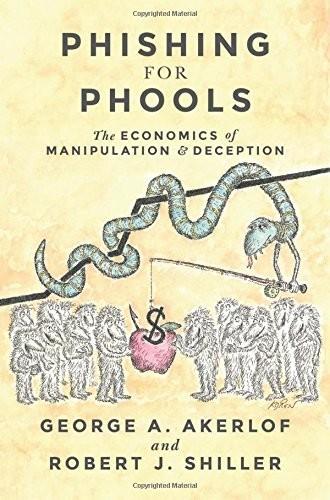
Phishing for Phools: The Economics of Manipulation and Deception
by
George A. Akerlof
,
Robert J. Shiller
and
Stanley B Resor Professor Of Economics Robert J Shiller
Published 21 Sep 2015
Connie Bruck, The Predators’ Ball: The Inside Story of Drexel Burnham and the Rise of the Junk Bond Raiders (New York: Penguin Books, 1989), pp. 193–240; Robert J. Cole, “Pantry Pride Revlon Bid Raised by $1.75 a Share,” New York Times, October 19, 1985, accessed March 17, 2015, http://www.nytimes.com/1985/10/19/business/pantry-pride-revlon-bid-raised-by-1.75-a-share.html. 21. Paul Asquith, David W. Mullins Jr., and Eric D. Wolff, “Original Issue High Yield Bonds: Aging Analyses of Defaults, Exchanges and Calls,” Journal of Finance 44, no. 4 (1989): 924. 22. Bruck, The Predators’ Ball, p. 76. 23.
…
Summers, “Breach of Trust in Hostile Takeovers,” in Corporate Takeovers: Causes and Consequences, ed. Alan J. Auerbach (Chicago: University of Chicago Press, 1988), pp. 33–68. 30. Brian Hindo and Moira Herbst, “Personal Best Timeline, 1986: ‘Greed Is Good,’” BusinessWeek, http://www.bloomberg.com/ss/06/08/personalbest_timeline/source/7.htm. 31. Bruck, The Predators’ Ball, p. 320. 32. Bruck, The Predators’ Ball. 33. FDIC v. Milken, pp. 70–71. 34. Alison Leigh Cowan, “F.D.I.C. Backs Deal by Milken,” New York Times, March 10, 1992. 35. See Thomas Piketty, Capital in the Twenty-First Century (Cambridge, MA: Harvard University Press, 2014), p. 291, fig. 8.5, and p. 292, fig. 8.6. 36.
…
Asquith, Mullins, and Wolff, “Original Issue High Yield Bonds,” p. 929, table 2: weighted average of first four numbers in right-hand column. 24. Ibid. Number of successful exchanges that have defaulted (16, in table 7, p. 935) on new issuances from 1977 to 1980 divided by new issuances from 1977 to 1980 (155, in table 1, p. 928). 25. Bruck, The Predators’ Ball, p. 10. 26. Stewart, Den of Thieves, p. 243. 27. Kurt Eichenwald, “Wages Even Wall St. Can’t Stomach,” New York Times, April 3, 1989, asserted that Milken had the highest one-year pay in US history. 28. See, for example, Michael C. Jensen, “Takeovers: Their Causes and Consequences,” Journal of Economic Perspectives 2, no. 1 (Winter 1988): 21–48. 29.
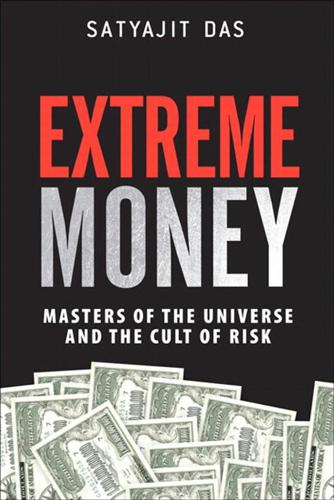
Extreme Money: Masters of the Universe and the Cult of Risk
by
Satyajit Das
Published 14 Oct 2011
Quoted in Baker and Smith, The New Financial Capitalists: 82. 22. Connie Bruck (1988) The Predators’ Ball: How Michael Milken and his Junk Bond Machine Staked the Corporate Raiders, Simon & Schuster, New York: 37. 23. Benjamin J. Stein (1992) A License to Steal: The Untold Story of Michael Milken and the Conspiracy to Bilk the Nation, Simon & Schuster, New York: 24, 25. 24. Sobel, Dangerous Dreamers, John Wiley, New York: 99. 25. Stein, A License to Steal: Chapter 9. 26. Sobel, Dangerous Dreamers: 187–91. 27. Bruck, The Predators’ Ball: 29. 28. Quoted in Sobel Dangerous Dreamers: 79. 29. Bryan Burroughs and John Helyar (1990) Barbarians at the Gate: The Fall of RJR Nabisco, Harper & Row, New York. 30.
…
Bryan Burroughs and John Helyar (1990) Barbarians at the Gate: The Fall of RJR Nabisco, Harper & Row, New York. 30. Bruck, The Predators’ Ball: 66. 31. Quoted in Sobel, Dangerous Dreamers: 146. 32. Ibid: 90. 33. Bruck, The Predators’ Ball: 197. 34. Ibid: 15. 35. Ibid: 66. 36. Ibid: 295. 37. Sobel, Dangerous Dreamers: 124. 38. Quoted in Ron Chernow (1990) The House of Morgan, Simon & Schuster, New York: 693. 39. Sobel, Dangerous Dreamers: 105. 40. Quoted in ibid: 120. 41. Quoted in ibid: 168. 42. Alan Greenspan, Statement before the Senate Finance Committee (26 January 1989). 43. Michael Jensen “Corporate control and the politics of finance” (Summer 1991) Journal of Applied Corporate Finance 4/2. 44.
…
Michael Jensen “Corporate control and the politics of finance” (Summer 1991) Journal of Applied Corporate Finance 4/2. 44. Bruck, The Predators’ Ball: 254. 45. James B. Stewart (1992) Den of Thieves, Simon & Schuster, New York: 261. 46. Sobel, Dangerous Dreamers: 2. 47. Stein, A License to Steal: 24, 25. 48. Bruck, The Predators’ Ball: 266. Chapter 10—Private Vices 1. Robert Sobel (1993) Dangerous Dreamers: The Financial Innovators from Charles Merrill to Michael Milken, John Wiley, New York: 191. 2. http://resident-alien.blogspot.com/2007/07/public-v-private-equity.html 3. Edward Chancellor with Lauren Silva “The Wizards of Oz: not making sense of Macquarie’s business model” (1 June 1007) Breaking Views; Gideon Haigh “Who’s afraid of Macquarie Banks?
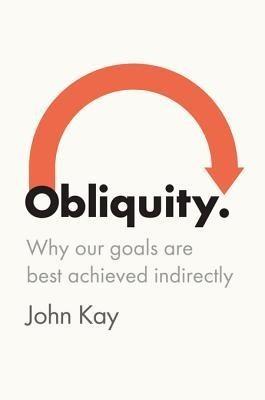
Obliquity: Why Our Goals Are Best Achieved Indirectly
by
John Kay
Published 30 Apr 2010
You can be greedy and still feel good about yourself.”11 Soon after, Boesky went to prison, convicted of insider trading. The businesses that epitomized the explosion of greed on Wall Street in the 1980s were Salomon Brothers (the firm mercilessly caricatured in Michael Lewis’s Liar’s Poker)12 and Drexel Burnham Lambert (more gently pilloried in Connie Bruck’s The Predators’ Ball).13 Salomon turned bond trading from a backwater into the activity of choice for the financially ambitious, while Drexel Burnham Lambert pioneered the issue of junk bonds. Salomon, whose abuses had exhausted the patience of the U.S. Treasury, had to be rescued by Warren Buffett (in a rare error) and was eventually taken over by Citigroup (which closed its trading operations).
…
Dunlap with Bob Andelman, Mean Business: How I Save Bad Companies and Make Good Companies Great (New York: Fireside, 1996), p. xii. 10 Securities and Exchange Commission, “Enforcement Proceedings,” SEC News Digest 2002-171, September 4, 2002. 11 Quoted in James B. Stewart, Den of Thieves (New York: Simon & Schuster, 1991), p. 223. 12 Michael Lewis, Liar’s Poker: Two Cities, True Greed (London: Hodder & Stoughton, 1989). 13 Connie Bruck, The Predators’ Ball: The Inside Story of Drexel Burnham and the Rise of the Junk Bond Raider (London: Penguin, 1989). 14 House Committee on Oversight and Government Reform, Transcript of Hearing (Richard Fuld), October 6, 2008. 15 Ken Auletta, Greed and Glory on Wall Street: The Fall of the House of Lehman (Harmondsworth, UK: Penguin, 1986), p. 235. 16 Lehman was at that time rescued by American Express, which floated the firm in 1994 ahead of its final collapse in 2008.
…
The Gift of Pain: Why We Hurt and What We Can Do About It. Grand Rapids, MI: Zondervan, 1997. Brickman, P., D. Coates, and R. Janoff-Bulman. “Lottery Winners and Accident Victims: Is Happiness Relative?” Journal of Personality and Social Psychology 36, no. 8 (1978), pp. 917–27. Bruck, Connie. The Predators’ Ball: The Inside Story of Drexel Burnham and the Rise of the Junk Bond Raider. London: Penguin, 1989. Byrne, John A. The Whiz Kids: The Founding Fathers of American Business—and the Legacy They Left Us. New York: Bantam Doubleday Dell, 1993. Cahoone, Lawrence E., ed. From Modernism to Postmodernism: An Anthology.
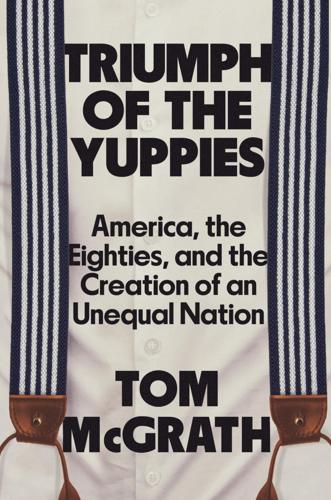
Triumph of the Yuppies: America, the Eighties, and the Creation of an Unequal Nation
by
Tom McGrath
Published 3 Jun 2024
The first conference Milken had put together, in 1979, had been attended by only about sixty people, but as Milken’s success and power had grown, so, too, had this annual event, which was now spread out over four days and could feel equal parts pep rally and bacchanal (it had been nicknamed “the Predators’ Ball”). Black limos chauffeured attendees all over Beverly Hills. Lavish dinners were held at some of LA’s finest restaurants. Cozy gatherings were put together that included well-compensated escorts. One Drexel partner would recall camping out each night in the Polo Lounge, inside the Beverly Hills Hotel, drinking Cristal ’til dawn and the start of another day of official conference programming.
…
He and his colleagues were the face of this new, high-flying, money-driven era. While Drexel continued to back small outsiders, as it had for a decade, it was increasingly doing business with Fortune 500 clients, which were using Milken’s junk bonds to help finance their large mergers. His reputation and influence could be seen not just at the Predators’ Ball, but in the waiting area outside his office in Beverly Hills, which was sometimes filled with people waiting to see him at five thirty on Sunday mornings. Despite his power and the vast sums he was making, Milken only seemed to want more. But his drive was less about the money itself than the impact he could make.
…
But Milken’s goal was to use them as the main financing tool in hostile corporate takeovers—in which an outside investor, against the wishes of management and the board, attempted to seize control of a corporation by acquiring the majority of its shares. That was how change could be forced; that was how stockholders could be rewarded; that was how corporate America could be saved from itself. Milken began working with his longtime stable of investors—men who always attended the Predators’ Ball—to find exactly the right takeover target. Among the investors was T. Boone Pickens. In many regards Pickens was a real-life J. R. Ewing, a colorful Texan who’d done well in the oil business over the previous several decades. But beginning in the early 1980s, Pickens, who chaired a company called Mesa Oil, had shifted his attention from searching for oil to searching for oil companies he could acquire.
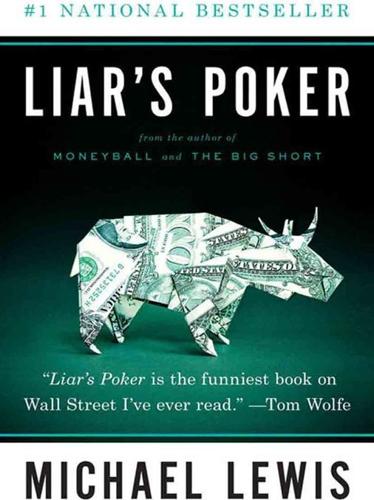
Liar's Poker
by
Michael Lewis
Published 1 Jan 1989
Or, to put it the other way around, the new bonds made it possible for the first time for investors to lend money directly to homeowners and shaky companies. And the more investors lent, the more others owed. The consequent leverage is the most distinctive feature of our financial era. In her book The Predators' Ball, Connie Bruck traced the rise of Drexel's junk bond department (Milken reportedly tried to pay the author not to publish). The story she tells begins in 1970, when Michael Milken studied bonds at the University of Pennsylvania's Wharton School of Finance. He was blessed with an unconventional mind, which overcame his conventional middle-class upbringing (his father had been an accountant).
…
Invest in the future of America, the small-growth companies that make us great. It was a populist message. The early junk bond investors, like mortgage investors, could make money and feel good about themselves. "You should have heard Mike's speech each year at the junk bond seminar in Beverly Hills" (known as the Predators' Ball, for the carnivores, like Ronald Perelman, in attendance), says a Drexel executive in New York. "It would have brought tears to your eyes." It's impossible to say exactly how much money Milken converted to his cause. Many investors simply gave over their portfolios to him. Tom Spiegel of Columbia Savings & Loan, for example, responded to Milken's message by inflating his balance sheet from $370 million in assets to $10.4 billion, much of it junk.
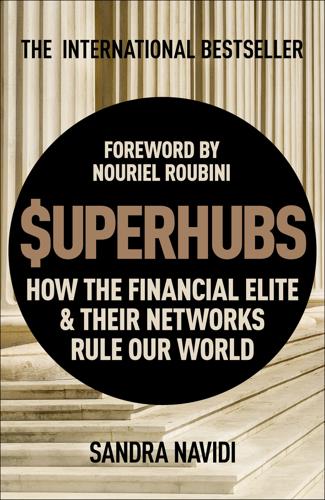
SUPERHUBS: How the Financial Elite and Their Networks Rule Our World
by
Sandra Navidi
Published 24 Jan 2017
In 1991 he founded the Milken Institute, which also hosts an annual global conference sometimes referred to as “Davos with palm trees,” although it is more U.S. and finance-sector centric than the annual gathering of the WEF. The conference takes place at the Beverly Hills Hotel, where Milken in his previous life had hosted his legendary junk bond conference called the “Predators’ Ball,” which has been colorfully immortalized in the book by the same title.8 Members of the financial elite, Washington power players, and world-renowned researchers attend the event. Billionaires Leon Black, Steve Schwarzman, Steven A. Cohen, Mort Zuckerman, and Richard LeFrak are regulars, as are former U.K. prime minister Tony Blair and Rwandan president Paul Kagame.
…
Summers, “Letter from President Summers on Women and Science,” January 19, 2005, http://www.harvard.edu/president/speeches/summers_2005/womensci.php. 7. Maureen Dowd, “Summers of Our Discontent,” New York Times, August 13, 2013, http://www.nytimes.com/2013/08/14/opinion/dowd-summers-of-our-discontent.xhtml. 8. Connie Bruck, The Predators’ Ball: The Inside Story of Drexel Burnham and the Rise of the Junk Bond Raiders (New York: Penguin, 1989). 9. “Strauss-Kahn Hired by Ukraine Billionaire Viktor Pinchuk,” BBC, February 3, 2016, http://www.bbc.com/news/business-35488200. 10. Christine Haughney and Peter Lattman, “The Man at the Center of a Dispute at the Dakota,” New York Times, February 25, 2011, http://www.nytimes.com/2011/02/26/nyregion/26dakota.xhtml. 11.
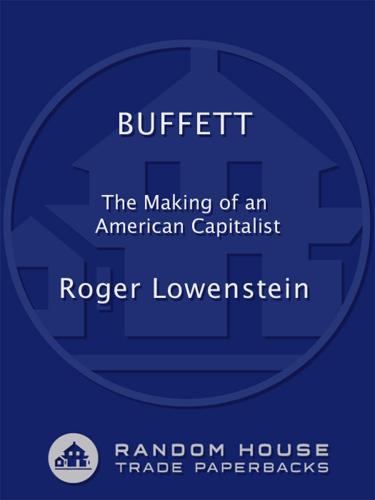
Buffett
by
Roger Lowenstein
Published 24 Jul 2013
Fraud litigation brought by Cinerama, a former Technicolor holder, in 1983 was dismissed in 1995. Cinerama’s appraisal claim against Perelman-owned MacAndrews and Forbes was still pending. See Connie Bruck, The Predators’ Ball: The Junk Bond Raiders and the Man Who Staked Them (New York: American Lawyer/Simon & Schuster, 1988), 199–201; Ralph King, Jr., “Ron Perelman’s $640 Million Unsure Thing,” Forbes, October 30, 1984; and McGough, “The Joys of Being an Insider.” 21. Bruck, The Predators’ Ball, 237. 22. Louis Lowenstein, the author’s father, was the moderator. 23. George Anders, Merchants of Debt (New York: Basic Books, 1992), 113. 24. Transcript of seminar; Knights, Raiders, and Targets, 11–27. 25.
…
In the words of a lawyer involved in related litigation, Buffett was expected to say that Perelman “screwed the shareholders.”19 Perelman vigorously denied that he had done so. But the case was settled, averting what might have been an interesting face-off.20 Simultaneous to Buffett’s takeover of Scott Fetzer, Perelman demonstrated the new rule of Wall Street—that once in play, a company, as an independent entity, was doomed. As Connie Bruck observed in The Predators’ Ball, Perelman’s assault on Revlon had elements of class war. Michel Bergerac, the cosmetic company’s aristocratic chairman, regarded the cigar-puffing Perelman and his Drexel financiers as “pawnbrokers.” He curtly waved them off, saying the company was not for sale. Perelman sneered back, depicting the lackluster Bergerac, who kept a butler and a suite in Paris (his “castle,” Perelman called it), as an archetype of corporate waste.
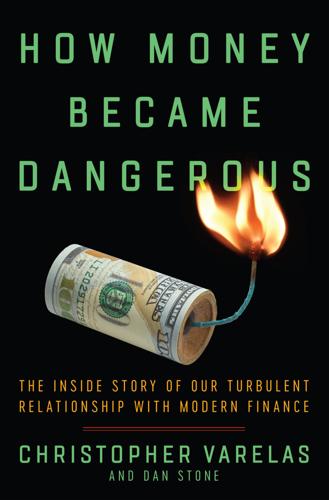
How Money Became Dangerous
by
Christopher Varelas
Published 15 Oct 2019
My assigned host was named Grace, a Wharton alumna and very impressive young woman who had already reached VP status even though she appeared to be no older than I was. On the flight out I had read The Predators’ Ball, a new book by Connie Bruck about Milken and Drexel’s forging of the junk bond market. One particularly juicy story described an annual four-day conference that Milken and his boys would throw in Beverly Hills, inviting 1,500 of their top clients—investors, corporate raiders, and CEOs. The conference—named the Predators’ Ball by Milken and his partners—included presentations, extravagant dinners, performances by the likes of Frank Sinatra and Diana Ross, and on one of the nights each year, an exclusive cocktail party for the most powerful guests.
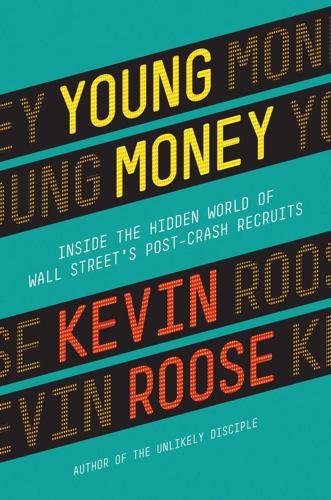
Young Money: Inside the Hidden World of Wall Street's Post-Crash Recruits
by
Kevin Roose
Published 18 Feb 2014
In some cases, I’ve relied on the interview subject’s account of an incident, and my account is only as good as his or her memory. Reading List For general research into Wall Street’s culture and history, I enjoyed and learned from the following books: Anderson, Geraint. Cityboy: Beer and Loathing in the Square Mile. London: Headline, 2008. Bruck, Connie. The Predators’ Ball: The Junk Bond Raiders and the Man who Staked Them. New York: American Lawyer, 1988. Burrough, Bryan, and John Helyar. Barbarians at the Gate: The Fall of RJR Nabisco. New York: Harper & Row, 1990. Cohan, William D. House of Cards: A Tale of Hubris and Wretched Excess on Wall Street. New York: Doubleday, 2009.

The Greed Merchants: How the Investment Banks Exploited the System
by
Philip Augar
Published 20 Apr 2005
Augar, Philip, and Palmer, Joy, The Rise of the Player Manager (Penguin Books, 2002), p. 12. 15. Lowenstein, Roger, Origins of the Crash (Penguin Press, 2004), pp. 24–5. 16. Wolfe, Tom, The Bonfire of the Vanities (Farrar, Straus & Giroux, 1987); Wall Street (American Entertainment/20th Century Fox, 1987); Lewis, Michael, Liar’s Poker (Hodder & Stoughton, 1989). 17. Bruck, Connie, The Predators’ Ball (Penguin Books, 1989); Stewart, James B., Den of Thieves (Simon & Schuster, 1991); Kochan, Nick, and Pym, Hugh, The Guinness Affair (Christopher Helm, 1987). 18. For the classic account see James B. Stewart, Den of Thieves, op. cit. 19. Bruck, Connie, op. cit., pp. 369–72. 20. Burrough, Bryan, and Helyar, John, Barbarians at the Gate (Random House, 2001), p. 622. 21.
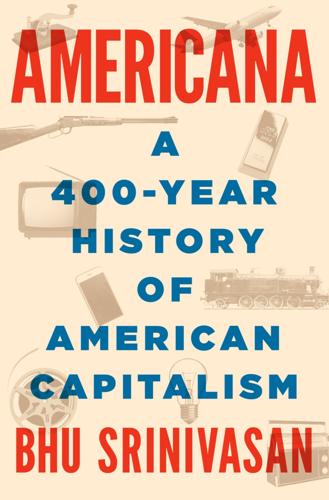
Americana: A 400-Year History of American Capitalism
by
Bhu Srinivasan
Published 25 Sep 2017
Buffett to shareholders of Berkshire Hathaway Inc., March 14, 1978. overmatched by the color TVs: T. R. Reid, The Chip (New York: Random House, 2001), 218. The oil crisis: David Halberstam, The Reckoning (New York: William Morrow, 1986), 452–59. Rodeo Drive and Wilshire Boulevard: Connie Bruck, The Predators’ Ball: The Inside Story of Drexel Burnham and the Rise of the Junk Bond Raiders (New York: Penguin Books, 1989), 218. $550 million in cash: James B. Stewart, Den of Thieves (New York: Touchstone, 1992), 243. Walter Braddock Hickman: Bruck, Predators’ Ball, 28. more than a portfolio: W.
…
Glenn Brown’s History of the United States Capitol. Washington DC: Government Printing Office, 1998. Brown, James. I Feel Good: A Memoir of a Life of Soul. New York: New American Library, 2005. Bruck, Connie. Master of the Game: Steven Ross and the Creation of Time Warner. New York: Penguin Books, 1995. ———. The Predators’ Ball: The Inside Story of Drexel Burnham and the Rise of the Junk Bond Raiders. New York: Penguin Books, 1989. Bruun, Erik, and Jay Crosby, eds. Living History America. New York: Black Dog & Leventhal, 1999. Bryan, William Jennings. The World’s Famous Orations: America, 1761–1837. Vol. 7.

Americana
by
Bhu Srinivasan
Buffett to shareholders of Berkshire Hathaway Inc., March 14, 1978. overmatched by the color TVs: T. R. Reid, The Chip (New York: Random House, 2001), 218. The oil crisis: David Halberstam, The Reckoning (New York: William Morrow, 1986), 452–59. Rodeo Drive and Wilshire Boulevard: Connie Bruck, The Predators’ Ball: The Inside Story of Drexel Burnham and the Rise of the Junk Bond Raiders (New York: Penguin Books, 1989), 218. $550 million in cash: James B. Stewart, Den of Thieves (New York: Touchstone, 1992), 243. Walter Braddock Hickman: Bruck, Predators’ Ball, 28. more than a portfolio: W.
…
Glenn Brown’s History of the United States Capitol. Washington DC: Government Printing Office, 1998. Brown, James. I Feel Good: A Memoir of a Life of Soul. New York: New American Library, 2005. Bruck, Connie. Master of the Game: Steven Ross and the Creation of Time Warner. New York: Penguin Books, 1995. ———. The Predators’ Ball: The Inside Story of Drexel Burnham and the Rise of the Junk Bond Raiders. New York: Penguin Books, 1989. Bruun, Erik, and Jay Crosby, eds. Living History America. New York: Black Dog & Leventhal, 1999. Bryan, William Jennings. The World’s Famous Orations: America, 1761–1837. Vol. 7.
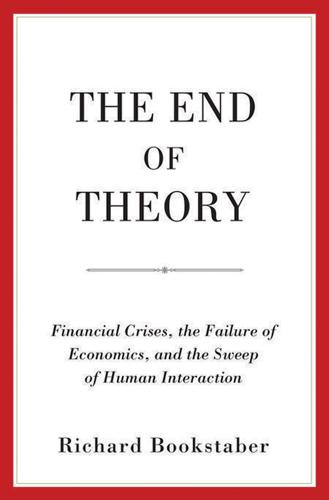
The End of Theory: Financial Crises, the Failure of Economics, and the Sweep of Human Interaction
by
Richard Bookstaber
Published 1 May 2017
Then as things gathered steam, anything that smelled of subprime became garbage: CDOs on subprime and then on anything with mortgage exposure; asset-backed commercial paper backed by mortgage securities; structured investment vehicles (SIVs) that might have mortgage exposure; and credit default swaps (CDSs) meant to insure against firms with these various sorts of exposure—CDSs held as investments, as inventory, and as collateral. The Ball Gets Rolling THE PREDATORS’ BALL Hedge funds have looked for a free pass on the 2008 crisis, because it centered on the banks.5 But the first shot fired came from two hedge funds at Bear Stearns Asset Management (BSAM), and things fell apart quickly from there. These were the Enhanced Leverage Fund and the High-Grade Fund, both of which invested mostly in mortgage-backed securities and CDOs based on subprime mortgages.

The Impulse Society: America in the Age of Instant Gratification
by
Paul Roberts
Published 1 Sep 2014
There was Icahn, who, after raiding TWA, directed the struggling airline to borrow half a billion dollars (most of which he paid to himself), then sold off the airline’s most profitable routes (a practice known as asset stripping) to service the debt. There was even a raiders’ gala—a posh annual conference hosted by the deal-making firm Drexel Burnham Lambert for all the big names in restructuring, known as the “Predators’ Ball.” For many critics, and a great many more traumatized former employees, the corporate raider perfectly captured the “greed is good” zeitgeist that overran American corporate culture in the 1980s. But to an emerging school of conservative economists, the raider was nothing less than an economic savior.
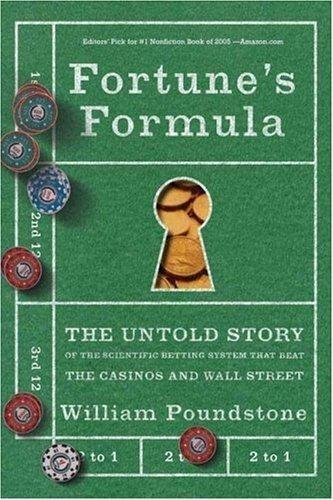
Fortune's Formula: The Untold Story of the Scientific Betting System That Beat the Casinos and Wall Street
by
William Poundstone
Published 18 Sep 2006
Breiman, Leo (1960). “Investment Policies for Expanding Businesses Optimal in a Long-Run Sense.” Naval Research Logistics Quarterly 7:647–51. ———(1961). “Optimal Gambling Systems for Favorable Games.” Fourth Berkeley Symposium on Probability and Statistics 1:65–78. Bruck, Connie (1989). The Predators’ Ball. New York: Penguin. ———(1994). Master of the Game. New York: Simon and Schuster. Buffett, Warren E. (1984). “The Superinvestors of Graham-and-Doddsville.” Hermes, the Columbia Business School Magazine, Fall 1984, 4–15. Casanova, Giacomo (1822–28). The Complete Memoirs. Originally published in German from 1822 to 1828.
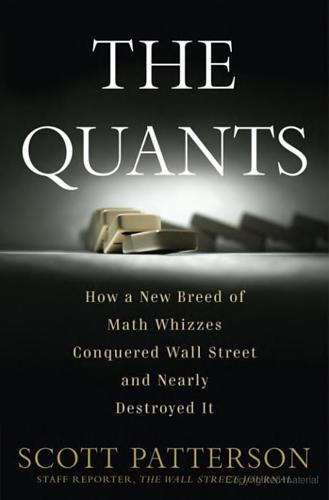
The Quants
by
Scott Patterson
Published 2 Feb 2010
In December 1987, audiences in movie theaters listened to Gordon Gekko, the slimy takeover artist played by Michael Douglas, proclaim the mantra for the decade in Oliver Stone’s Wall Street: “Greed is good.” A series of popular books reflecting the anti–Wall Street sentiment hit the presses: Bonfire of the Vanities by Tom Wolfe, Barbarians at the Gate by Wall Street Journal reporters Bryan Burrough and John Helyar, The Predators’ Ball by Connie Bruck, Liar’s Poker by Michael Lewis. The quants were licking their wounds. Their wondrous invention, portfolio insurance, was roundly blamed for the meltdown. Fama’s efficient-market theory was instantly called into question. How could the market be “right” one day, then suffer a 23 percent collapse on virtually no new information the next day, then be fine the day after?
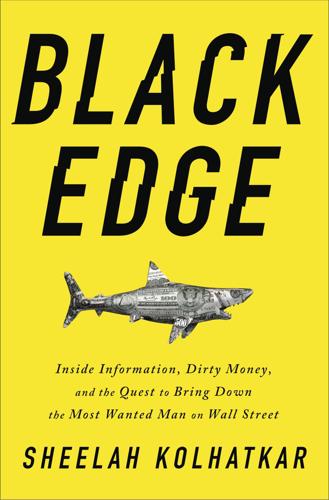
Black Edge: Inside Information, Dirty Money, and the Quest to Bring Down the Most Wanted Man on Wall Street
by
Sheelah Kolhatkar
Published 7 Feb 2017
At the time, if someone wanted to trade a stock option, they had to call up a broker at Gruntal or a handful of other firms, explain what kind of bet they wanted to make and over what time horizon, and basically accept whatever price they were given. By 1968, Icahn’s department at Gruntal was bringing in commissions of $1.5 million and was one of the most profitable at the firm. Icahn left that year to start his own company. Connie Bruck, The Predators’ Ball (Penguin, 1989), p. 151. so he could study the stock tables: Jack D. Schwager, Stock Market Wizards (HarperCollins, 2001), p. 269. the area became partial inspiration: Judith S. Goldstein, The Great Gatsby: Inventing Great Neck: Jewish Identity and the American Dream (Rutgers University Press, 2006), p. 3.
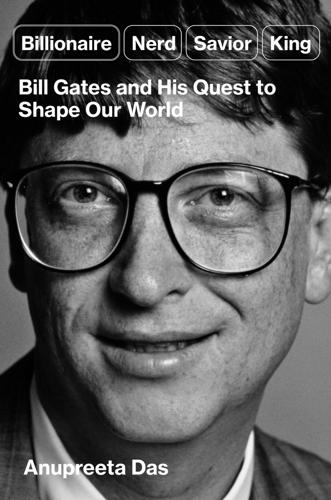
Billionaire, Nerd, Savior, King: Bill Gates and His Quest to Shape Our World
by
Anupreeta Das
Published 12 Aug 2024
Nerds 1.0 and 2.0 The 1980s were the go-go years for Wall Street. Hostile takeovers were new and thrilling, and celebrity dealmakers had cultural capital. It was a place driven by excessive greed, outsized bets, and financial scandal, and it was immortalized in books like Den of Thieves, The Predators’ Ball, and Barbarians at the Gate. Ivan Boesky and Michael Milken, for a time, became synonymous with financial crime. The takeover of RJR Nabisco established the private equity business as an untamed, acquisitive new force with the potential for economic harm rather than good. Literature and popular culture provided the harmony to the main tune of Wall Street in that decade.

Capital Ideas: The Improbable Origins of Modern Wall Street
by
Peter L. Bernstein
Published 19 Jun 2005
The Brady report explained this tragedy by denouncing “mechanical, price-insensitive selling . . . concentrated in the hands of surprisingly few institutions” and proposed a series of constraints to bring the market’s penchant for wildness under control. The popular literature about the world of investment in the 1980s carries titles that reflect those events: Bonfire of the Vanities, Barbarians at the Gates, The Predators’ Ball, and Liars’ Poker. The main characters are arrogant, greedy, cynical, and shady. At one point or another in their careers, they grow rich beyond the dreams of most of us—largely because they have profited from the new technologies, novel financial instruments, and mysterious investment strategies that emerged from the revolution in finance and investing.

Culture and Prosperity: The Truth About Markets - Why Some Nations Are Rich but Most Remain Poor
by
John Kay
Published 24 May 2004
"Functional Imaging ofNeural Responses to Expectancy and Experience of Monetary Gains and Losses." Neuron 30 (May): 619-39. Brittan, S. 1971. Steering the Economy. Harmondsworth, Penguin. ---. 1996. Capitalism with a Human Face. London: Fontana Press. Broadie, A., ed. 1997. The Scottish Enlightenment: An Anthology. Edinburgh: Canon gate. Bruck, C. 1989. The Predators, Ball: The Inside Story ofDrexel Burnham and the Rise ofthe Junk Bond Raiders. New York: Penguin. Brunekreeft, G. 1997. Coordination and Competition in the Electricity Pool ofEngland and Wales. Baden-Baden: Nomos-Verlag. Buchan, J. 1997. Frozen Desire: An Enquiry into the Meaning ofMoney. London: Picador.
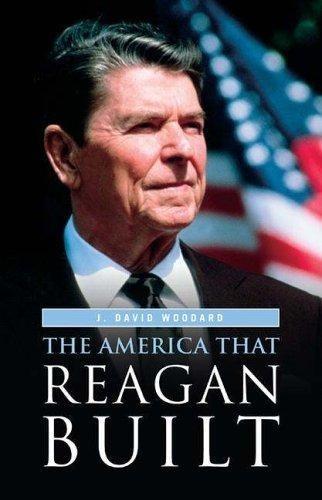
The America That Reagan Built
by
J. David Woodard
Published 15 Mar 2006
Janet Lowe, Secret Empire: How 25 Multinationals Rule the World (Homewood, IL: Business One Irwin, 1992), p. 5. 9. Bryan Burrough and John Helyar, Barbarians at the Gate (New York: Harper and Row, 1990). 10. U.S. News and World Report, December 12, 1986. 11. John Ehrman, The Eighties (New Haven, CT: Yale University Press, 2005), p. 23. 12. Connie Bruck, The Predators Ball (New York: Penguin Books, 1986). 13. Statistical Abstract of the United States, 1990. 14. National Review, August 31, 1992. 15. John Ehrman, The Eighties (New Haven, CT: Yale University Press, 2005), p. 109. 16. Charles Jencks, What Is Postmodernism? (New York: St. Martin’s Press, 1987). 17.
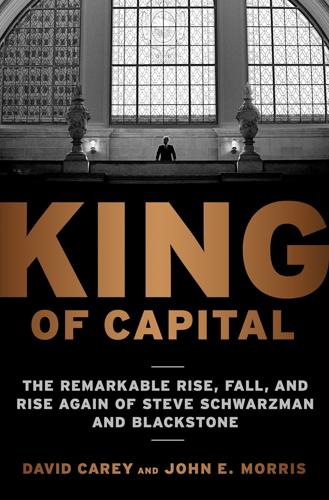
King of Capital: The Remarkable Rise, Fall, and Rise Again of Steve Schwarzman and Blackstone
by
David Carey
Published 7 Feb 2012
Auletta, Greed: Ken Auletta, Greed and Glory on Wall Street: The Fall of the House of Lehman (New York: Warner Books, 1986). Baker and Smith, Capitalists: George P. Baker and George David Smith, The New Financial Capitalists: Kohlberg Kravis Roberts and the Creation of Corporate Value (Cambridge, England: Cambridge University Press, 1998). Bruck, Predators: Connie Bruck, The Predators’ Ball: The Junk Bond Raiders and the Man Who Staked Them (New York: The American Lawyer / Simon & Schuster, 1988). Burrough and Helyar, Barbarians: Bryan Burrough and John Helyar, Barbarians at the Gate: The Fall of RJR Nabisco (New York: Harper & Row, 1990). Finkel and Geising, Masters: Robert A.
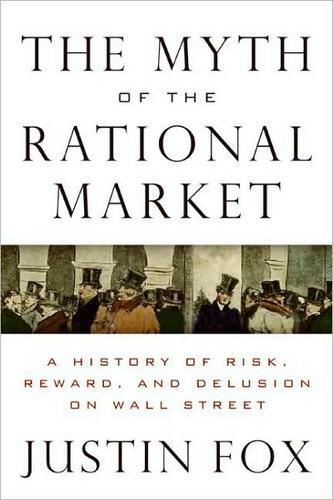
The Myth of the Rational Market: A History of Risk, Reward, and Delusion on Wall Street
by
Justin Fox
Published 29 May 2009
Manne, “Mergers and the Market for Corporate Control,” Journal of Political Economy (April 1965): 113. 31. Manne, “Mergers and the Market,” 112. 32. Louis Lowenstein, “Pruning Deadwood in Hostile Takeovers: A Proposal for Legislation,” Columbia Law Review (March 1983): 251–52. 33. Both the Milken background and the rise of the takeover artists are recounted in Connie Bruck, The Predators’ Ball: The Junk Bond Raiders and the Man Who Staked Them (New York: Simon & Schuster, 1988). Drexel was not the first firm to “manufacture” junk bonds; Lehman Brothers was, in 1977. But Drexel soon came to dominate the business. 34. Years later, after a federal judge had thrown Milken in jail for securities fraud, Chicago professor and soon-to-be law school dean Daniel Fischel wrote a book with the very unprofessorial title Payback: The Conspiracy to Destroy Michael Milken and His Financial Revolution (New York: HarperBusiness, 1995). 35.
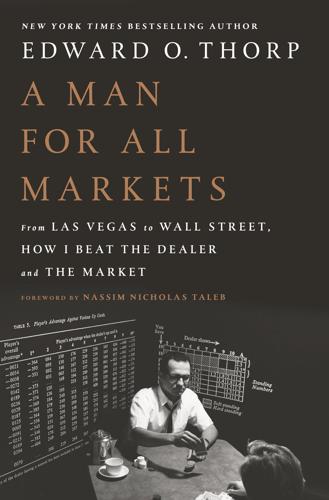
A Man for All Markets
by
Edward O. Thorp
Published 15 Nov 2016
and hundreds of books An excellent history of these meanderings is Justin Fox’s book The Myth of the Rational Market. all the future earnings Interpreted as net value paid out or accumulated for the benefit of a sole owner. on inside information As chronicled by James Stewart in Den of Thieves, Connie Bruck in The Predators’ Ball, and others. this type profitably Tobias, Andrew, Money Angles, Simon and Schuster, New York, 1984, pp. 71–72. Often, management would offer to redeem shares at an intermediate price, thus cashing out the dissidents and retaining an asset base of unredeemed shares which they could continue to be paid to manage.
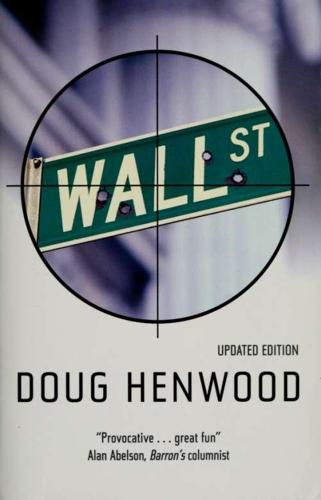
Wall Street: How It Works And for Whom
by
Doug Henwood
Published 30 Aug 1998
Litzenberger (1989). "Empirical Tests of the Consumption-Oriented CAPM," fournal of Finance 44, pp. 231-262. Brooks, John (1973). The Go-Go Years (New York: Weybright and Talley). Brown, Norman O. (1985). Life Against Death (Middletown, Conn.: Wesleyan University Press). Bruck, Connie (1988). The Predators' Ball (New York: The American Lawyer/Simon and Schuster). Bulow, Jeremy, and Paul Klemperer (1991). "Rational Frenzies and Crashes," Centre for Economic Policy Research Discussion Paper No. 593 (London, CEPR, October). Burrough, Bryan, and John Helyar (1990). Barbarians at the Gate (New York: Harper & Row).
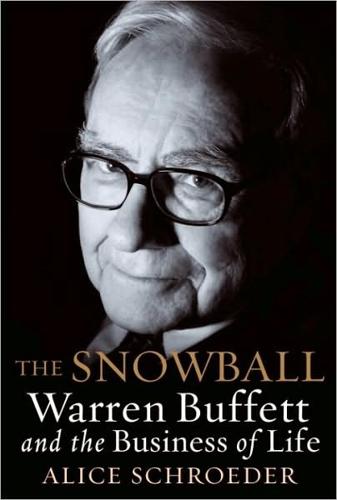
The Snowball: Warren Buffett and the Business of Life
by
Alice Schroeder
Published 1 Sep 2008
The bankers’ fees became so staggering that, instead of waiting for deals to present themselves, the bankers went a-huntin’ on their own, flipping through the ranks of the S&P 1000 the way Buffett had once used his Moody’s Manuals to find cigar-butt stocks. This orgy of mergers that often took place with the consent of only one party riveted the public; the clashes of titanic egos filled the daily papers. Michael Milken’s annual junk-bond conference, the Predators’ Ball,6 lent its name to the entire era. Buffett scorned the way these deals transferred riches from shareholders to managers and corporate raiders, helped by a long, long line of toll-taking bankers, brokers, and lawyers.7 “We don’t do hostile takeovers,” he said. The deals of the 1980s repelled him above all because they were loaded with debt.
…
Weiner, What Goes Up: The Uncensored History of Modern Wall Street as Told by the Bankers, Brokers, CEOs, and Scoundrels Who Made It Happen. New York: Little, Brown, 2005. 5. They started out as investment-grade bonds, but when their issuers cratered, the bonds became so cheap that they paid a higher rate; e.g., a bond that yielded 7% would yield 10% if the price of the bond dropped to 70% of par. 6. See Connie Bruck, The Predators’ Ball: The Inside Story of Drexel Burnham and the Rise of the Junk Bond Raiders. New York: The American Lawyer: Simon & Schuster, 1988. 7. Typically the deals worked either by giving shareholders who sold a higher price but leaving a much weakened company for those who didn’t, or by offering a premium that was only a fraction of the value the buyer would create through actions the former management should have taken themselves.
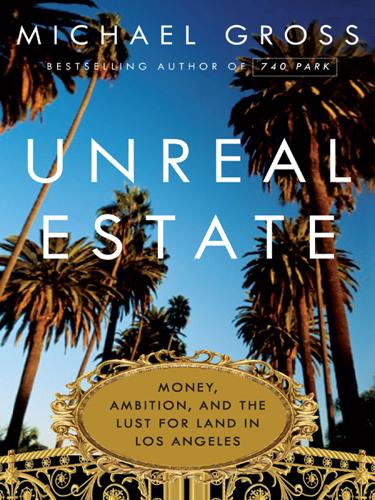
Unreal Estate: Money, Ambition, and the Lust for Land in Los Angeles
by
Michael Gross
Published 1 Nov 2011
Chicago: Western Historical Association–Lewis Publishing Company, 1922. Brown, Peter Harry, and Pat H. Broeske. Howard Hughes: The Untold Story. New York: Penguin Group, 1996. Brown, Peter Harry, and Patte B. Barham. Marilyn: The Last Take. New York: Dutton,1992. Bruck, Connie. When Hollywood Had a King. New York: Random House, 2003. ——. The Predators’ Ball: Junk-Bond Traders and the Man Who Staked Them. New York: Simon & Schuster, 1988. Cantor, Bert. The Bernie Cornfeld Story. New York: Lyle Stuart Inc., 1970. Carr, Harry. Los Angeles. New York: D. Appleton–Century Company, 1935. Cassini, Oleg. In My Own Fashion: An Autobiography. New York: Pocket Books, 1987.
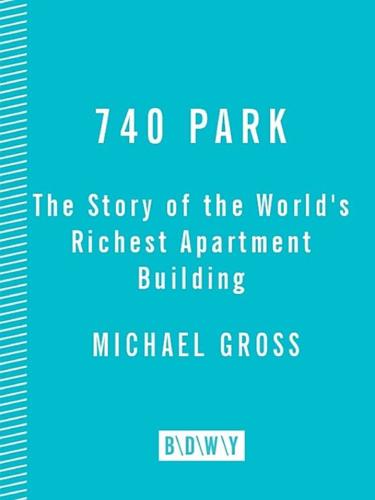
740 Park: The Story of the World's Richest Apartment Building
by
Michael Gross
Published 18 Dec 2007
New York: Viking, 2000. BRAUDY, SUSAN. This Crazy Thing Called Love. New York: Knopf, 1992. BROOKS, JOHN. The Go-Go Years. New York: Weybright and Talley, 1973. ———. Once in Golconda. New York: W. W. Norton, 1969. BRUCK, CONNIE. Master of the Game. New York: Simon and Schuster, 1994. ———. The Predators’ Ball. New York: Simon and Schuster, 1988. BYRON, CHRISTOPHER. Testosterone, Inc. Hoboken, N.J.: Wiley, 2004. CARNOCHAN, W. B. Momentary Bliss: An American Memoir. Stanford, Calif.: Stanford University Libraries, 1999. CHERNOW, RON. The House of Morgan. New York: Atlantic Monthly Press, 1990. ———.

Hard Landing
by
Thomas Petzinger
and
Thomas Petzinger Jr.
Published 1 Jan 1995
.: Harvard University Press, 1982. Brown, Anthony E. The Politics of Airline Deregulation. Knoxville: University of Tennessee Press, 1987. Brown, Mick. Richard Branson: The Inside Story. London: Headline, 1989. Brown, Stanley H. Ling: The Rise, Fall, and Return of a Texas Titan. New York: Atheneum, 1972. Bruck, Connie. The Predators Ball. New York: The American Lawyer/Simon & Schuster, 1988. Campbell-Smith, Duncan. The British Airways Story. London: Hodder and Stoughton, 1986. Carter, Jimmy. Public Papers of the Presidents of the United States. Washington, DC.: U.S. Government Printing Office, 1977. 11, Richard E. Air Transport and Its Regulators, An Industry Study.